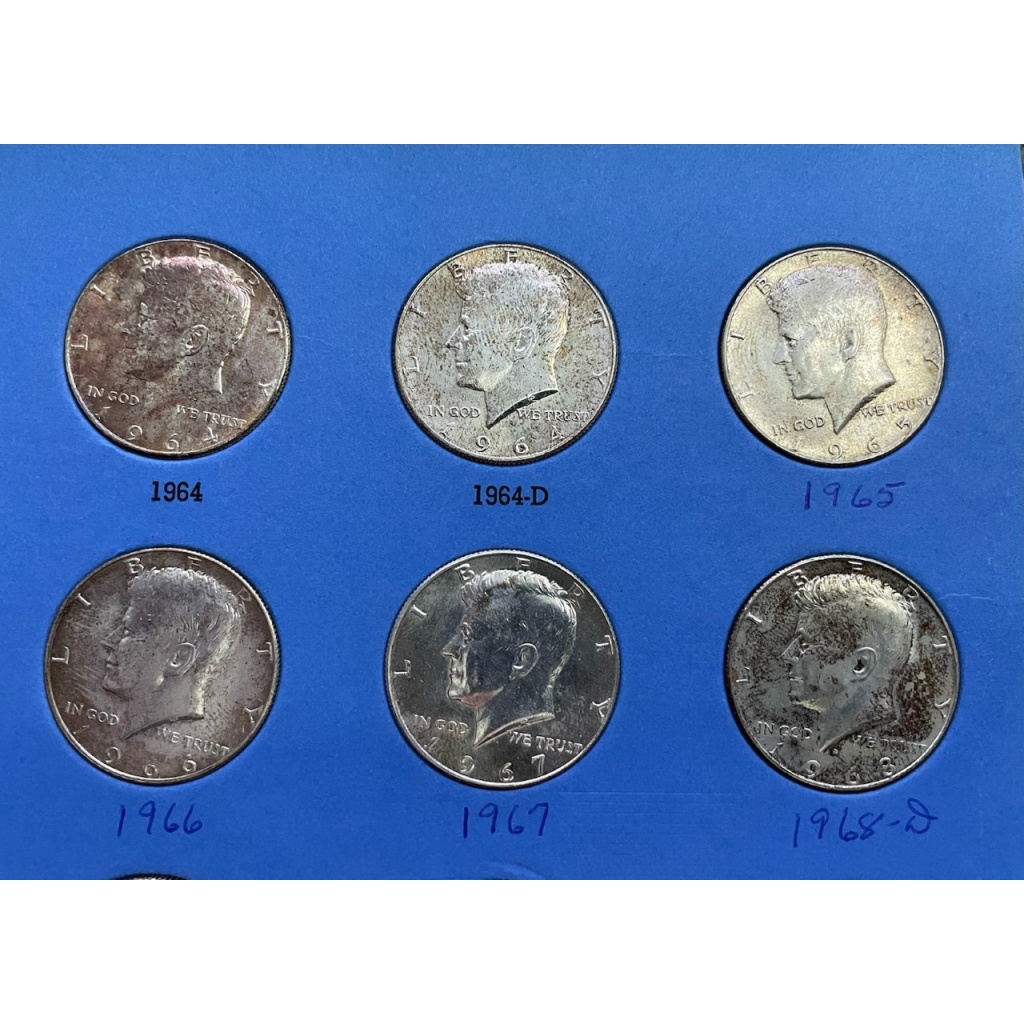Numismatics covers a large area within coins, paper money and commerce. One of the most widely known areas within numismatics is the silver coin market. It seems hard to imagine in the world of fiat currency that money in circulation used to be made of silver. It’s true, but that was then. The year 1964 was by and large the last year that the United States Mint produced silver coins for circulation.
Technically, Kennedy Half Dollars issued between 1965 and 1969 were still made of 40% silver. Those half-dollars were 90% silver in 1964 and before. The Kennedy Half Dollars are unique in this understanding.
The slang in numismatics is the expression “90% silver” to blanket all silver coins leading up to 1964. This was a modern time comparable to the present time when everything went right concerning mint productions and the number of coins produced in that there were no key dates.
Unless you have certified MS70 graded coins from the early 1960s era, you the collector are sitting on bullion and a lot of effort selling each individually. Perhaps this is part of the reason that the coin and bullion dealers refer to the 1964 and earlier coins as “junk silver.”
Anyone who reaches into their pocket and pulls out a quarter today will more or less be identical in metallic composition to the quarter that was issued in 1965. This may not be universally true for all of the coins, but even with composition changes these are not purchased for the value of their metals.
The weight of a silver Washington Quarter minted between 1932 and 1964 is listed as 0.1808479 troy ounce pure silver. On June 24, 2021 the value of one silver ounce was $25.86. A roll of quarters has 40 coins with 7.15 oz. of silver. Coin shops and businesses will have formulas for what they charge above that price to you the consumer. On this particular date, that roll of uncirculated 1964 quarters to which millions were made is worth $184.89.
There are of course websites and calculators that will help a seller out with their old 90% silver quarters from before 1964, and coin shops will offer a discounted price to the current value with the understanding that there are transportation and ultimately melting costs to flip a roll of silver quarters.
Where this argument gets interesting is that not everyone bought their silver today at higher spot prices. Think of the silver collectors who bought the same roll of quarters in 2003 when an ounce of silver was worth $4.88. Imagine when the price of silver hit $40.00 per ounce.
In effect, a Morgan Silver Dollar is not one full ounce of silver. The actual weight of a Morgan Silver Dollar is 0.77 ounces of silver. A sample of that coin that is worn or damaged is now worth only its silver value and sold in June 2021 that might be $20.00 or so if a seller has enough ounces to create a price break.
Price breaks are obvious in that higher quantities get better deals, and for a coin shop or metals dealer the transaction at higher volume is worth the time and financial commitment. Some small shops might have to make a special trip to a bullion dealer in the region and the time commitment is plenty when the price of silver changes daily.
A rule of thumb about valuing coins solely for their silver is to understand high mintage dates. Even rolls of Mercury dimes during the war years are so common that a Brilliant Uncirculated roll of them will still likely be valued by their silver content. That said, if you find yourself with a roll of 1942 Mercury Dimes it is imperative to check every single one of those dimes to make sure there is not a 2-stamped over one variety (error). To prove the point — a PCGS MS64 1942/1 example was just listed on eBay for a whopping sum of $7,699.99. That is a huge difference from the $81.20 the uncirculated 1942 P roll of Mercury Dimes would be worth in silver content.
There was a rather well documented coin shortage during the COVID-19 pandemic. As people were not leaving home very often under many lock-down provisions, it meant they were not out routinely throwing their paper money and coins into the economy. Businesses we still having to fork over change to customers who paid in cash, and that means millions of Americans took change home until businesses started announcing policies about coin shortages. This also means that there countless numbers of Americans who unknowingly have at least one “90% silver” coin in their stash of loose change in a bowl at home.
On a personal note about the value of silver coins, I had a math teacher in 6th grade that would challenge the class to find anything silver in change which he outlined was minted before 1965. If we had one, he would trade us a can of soda for a value of about $0.50 to $0.60. That was a fair trade for the time.

Categories: Coins & Money


